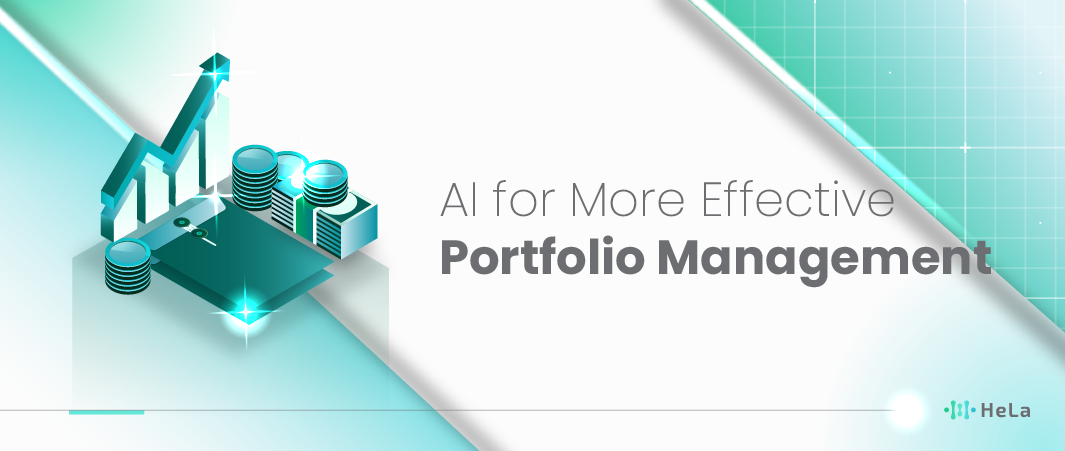As artificial intelligence continues to evolve, it brings transformative tools that enhance portfolio management, enabling investors to analyze vast datasets, reduce emotional biases, and personalize investment strategies. With these capabilities, AI not only offers the potential for higher returns but also helps in mitigating risks associated with market volatility. In this article, we will delve into the essential ways AI is reshaping portfolio management, providing insights into its various applications and benefits.
Exploring the integration of AI in portfolio management reveals a multitude of advantages, from rapid data analysis to improved risk management. AI algorithms can analyze market conditions, assess individual investor profiles, and suggest personalized investment strategies that align with specific financial goals. As we discuss the top tools and techniques for leveraging AI effectively, you will gain a comprehensive understanding of how to utilize these innovations to your advantage. Whether you are a seasoned investor or just starting, the insights shared in this article will empower you to make informed decisions and enhance your portfolio management strategy with AI.
What Is AI Portfolio Management?

AI Portfolio Management is the process of using artificial intelligence to automatically manage investment portfolios. Essentially, this technology combines big data analysis, advanced algorithms, and machine learning to make smarter investment decisions. In practice, AI portfolio management utilizes real-time data, such as market movements, economic news, and investor behavior, to predict asset price movements and determine the optimal times to buy or sell. This approach is designed to optimize investment outcomes, reduce risk, and eliminate the emotional biases that often influence human decision-making.
The primary advantage of AI portfolio management lies in its speed of data analysis and decision execution. AI can process highly complex market information in seconds, far more quickly than a human can. By accessing and analyzing data from various sources, AI can detect patterns that might be overlooked by traditional investors. Furthermore, AI continuously learns from previous decision outcomes, enhancing the algorithms ability to make more accurate predictions over time. This is why many large asset managers are beginning to adopt AI technology in their strategies.
However, like any technology, AI portfolio management comes with its challenges. One major concern is the risk of incorrect automatic decisions if the algorithms are not updated or trained with relevant data. Additionally, AI remains vulnerable to unexpected market shocks, such as economic crises or sudden major news events. While AI can quickly process vast amounts of data, predictions are not guarantees, as financial markets often behave randomly. Therefore, it is important for investors not to rely solely on AI, but to use it as a tool to support broader investment strategies.
Overall, AI portfolio management offers significant potential to enhance investment outcomes in a more efficient and measurable way. However, it is not a magical solution that can fully replace the human role. AI can help manage risk, but investors still need to understand fundamental strategies, conduct oversight, and adjust their portfolios according to their financial goals. When used correctly, AI portfolio management can be a highly useful tool for managing portfolios in a modern, responsive manner to market changes.
Benefits of AI for Portfolio Management

The use of AI in Portfolio Management is becoming increasingly popular due to the various benefits it offers. With the ability to process large amounts of data and provide logic-based decisions unaffected by emotions, AI has transformed the way investors manage their assets. This technology provides significant advantages in terms of efficiency, accuracy, and adaptability to dynamic market changes. Below are some key benefits of implementing AI in portfolio management:
Speed and efficiency
AI enables portfolio managers to rapidly analyze large datasets, identifying investment opportunities and market trends in seconds. This allows investors to respond to market shifts in real-time, giving them a competitive advantage that’s difficult to achieve manually.
The speed and efficiency provided by AI also allow portfolio managers to handle more assets simultaneously without compromising analysis quality. This automation ensures thorough analysis while enabling better decision-making.
Reduction of emotional bias
One of the major shortcomings of human investors is their natural tendency to let emotions, such as fear and greed, influence their investment decisions, which can lead to impulsive and poorly thought-out actions. AI, on the other hand, is completely unaffected by emotions or psychological pressures, ensuring that its investment decisions are always based purely on data and logical analysis.
Also Read: 12 Best AI Trading Bots to Consider in 2025
This reliance on data-driven reasoning allows AI to make decisions that are more rational, reducing the likelihood of mistakes caused by emotional reactions. By removing these emotional biases, AI contributes to more stable and consistent decision-making over the long term, which is essential for investors aiming to achieve sustainable results in the market.
Personalization of investment strategies
AI has the remarkable ability to customize investment strategies based on an investor’s unique profile, which includes factors like risk tolerance, financial goals, and specific preferences. This advanced technology processes a range of personal data from investors, such as their appetite for risk, preferred investment horizon, and ultimate objectives, and then tailors strategies to align closely with those individual needs.
As time progresses, AI continues to adapt by learning from the outcomes of the portfolio and shifts in the market, enhancing its ability to offer personalized and relevant investment recommendations. This continuous learning process ensures that AI-driven strategies evolve and remain finely tuned to each investor’s unique circumstances, providing a more dynamic approach to portfolio management.
Enhanced risk management
AI comes equipped with highly sophisticated algorithms that allow it to analyze vast amounts of market data and detect potential risks early on. These algorithms can pick up on key indicators like price fluctuations, global economic shifts, or emerging trading patterns, giving portfolio managers a head start on identifying threats.
With this early warning system, AI enables swift and informed responses, such as reallocating assets or diversifying investments to minimize exposure to potential losses. By doing so, AI not only boosts the chances of maximizing returns but also plays a crucial role in safeguarding the portfolio from risks that could otherwise result in significant setbacks for investors.
How to Use AI for More Effective Portfolio Management in 2025?
Using AI in portfolio management has become an increasingly popular choice among investors and professional asset managers. With the ability to analyze vast amounts of data in a short time and make more rational decisions, AI can help optimize portfolios, minimize risks, and enhance investment outcomes. However, to effectively harness AI’s potential, a deep understanding of how it works and how to integrate it into investment strategies is necessary. Here’s a comprehensive guide on how to use AI in portfolio management:
1. Collecting and Understanding Big Data
AI helps us collect vast amounts of data from sources like stock prices, financial reports, and economic news. It allows us to process this information faster and identify patterns that we might overlook.
For instance, AI can detect links between global events and stock prices that are not obvious to us. This gives us a clearer understanding of which investments may go up or down.
2. Choosing Investments with Better Diversification
Diversifying investments, which means spreading funds across different assets, is a crucial strategy for minimizing risk in any portfolio. AI plays a significant role in this process by selecting the most appropriate mix of assets tailored to an investor’s risk tolerance and financial goals.
Instead of relying on a single type of investment, AI helps create a more balanced and diverse portfolio, offering better protection against market fluctuations. Additionally, AI constantly monitors and evaluates market conditions, allowing it to adjust the portfolio dynamically and ensure that strategies are always up to date to protect profits and reduce potential losses.
3. Helping to Predict Market Trends
AI possesses the remarkable capability to forecast market movements by analyzing historical data patterns and trends, providing valuable insights into potential future fluctuations. This predictive ability allows investors to identify the optimal times to buy or sell stocks, maximizing their chances for profitable trades.
Additionally, AI can assess the likelihood of market volatility versus stability, enabling us to make more informed and strategic decisions. For instance, with this information, we can proactively sell assets before their values decline or choose to increase our investments when prices are favorably low, ultimately enhancing our overall investment strategy.
4. Detecting Risks Faster
AI is capable of monitoring the market in real-time, providing alerts when risks begin to escalate, such as sudden drops in stock prices or signs of economic uncertainty. This real-time awareness enables us to respond promptly, allowing for actions like selling assets before potential losses can increase significantly.
Furthermore, AI continuously tracks a multitude of factors simultaneously, including global news events and market trends, ensuring that we remain well-informed and prepared for any unexpected developments that might impact our investment portfolio. By leveraging this advanced technology, we can enhance our ability to navigate market fluctuations and safeguard our financial interests more effectively.
Also Read: 10 Best Enterprise AI Development Companies in 2025
5. Automating Trades
With the help of AI, we can establish an automated trading system that operates according to predefined strategies tailored to our investment goals. This functionality allows AI to autonomously buy or sell assets without requiring our constant oversight, effectively streamlining the trading process.
Given the fast-paced nature of the trading world, where prices can fluctuate dramatically in mere seconds, AI’s ability to execute transactions quickly and accurately becomes invaluable. This capability is particularly beneficial for investors who wish to grow their portfolios without dedicating extensive time to monitoring the market continuously.
6. Getting Automated Investment Advice
Robo-advisors represent a cutting-edge solution in investment management, functioning as automated AI-based services that deliver personalized investment advice aligned with our unique financial needs and objectives. One of the key advantages of robo-advisors is their cost-effectiveness, as they typically operate at a lower fee structure compared to traditional human investment managers.
These automated systems possess the capability to automatically adjust our investment portfolio based on market conditions and our individual risk preferences. As a result, even if we lack extensive knowledge about investing, a robo-advisor can effectively assist us in managing our portfolios and providing suitable investment options that support our long-term financial goals.
Top 5 AI Tools for Portfolio Management

Here is a more in-depth look at the Top 5 AI tools for portfolio management in 2025, giving investors the power to automate decisions, personalize their strategies, and optimize returns through advanced technology.
Wealthfront
Created by Andy Rachleff and Dan Carroll, Wealthfront is widely regarded as one of the most reliable robo-advisors for AI-driven portfolio management. It simplifies the investment process by creating a diversified portfolio tailored to each user’s risk tolerance, time horizon, and financial goals.
Wealthfront’s AI constantly monitors portfolios and automatically rebalances them as needed. One standout feature is tax-loss harvesting, where the platform identifies losing investments to offset gains and reduce tax liability. The platform also offers a “Path” tool, an AI-driven financial planning service that helps users reach long-term financial goals such as buying a house or saving for retirement.
Trade Ideas
Founded by David Aferiat, Dan Mirkin, and Philip Smolen, Trade Ideas uses a sophisticated AI engine named “Holly” to analyze vast amounts of stock market data, identifying patterns and potential trading opportunities that may go unnoticed by human traders.
Holly processes thousands of trading scenarios in real-time and suggests high-probability trades. This platform is ideal for day traders looking for actionable insights and trade automation. Trade Ideas can also simulate multiple market scenarios, helping traders test their strategies without risking actual capital.
Acorns
Acorns, founded by Walter and Jeff Cruttenden, is a unique AI-based micro-investing app designed to make investing simple and automatic. It works by rounding up users’ everyday purchases to the nearest dollar and investing the spare change in a diversified portfolio of low-cost ETFs.
This “set it and forget it” model is perfect for new investors who want to build wealth passively. The AI behind Acorns determines the ideal portfolio allocation for each user based on factors like age, income, and risk tolerance, and automatically rebalances the portfolio when necessary.
eToro
Developed by Yoni Assia and Ronen Assia, eToro is well-known for its social trading features, allowing users to copy trades from successful investors. However, eToro’s CopyPortfolios takes it a step further by offering AI-driven portfolios based on specific themes or market sectors, such as technology, cryptocurrencies, or sustainable investing.
The AI behind CopyPortfolios aggregates data from various sources to build and manage portfolios automatically, making it an excellent tool for investors who want to diversify their assets without manually selecting individual stocks.
STRATxAI
STRATxAI is an advanced AI-driven platform that focuses on delivering intelligent portfolio management and asset allocation solutions tailored for both businesses and individual investors. By leveraging machine learning, STRATxAI enables users to optimize their portfolios through comprehensive market trend tracking and data analysis, ultimately enhancing their investment strategies to maximize returns.
The platform stands out by providing customizable options that allow investors to achieve personalized financial objectives while remaining adaptable to ever-changing market conditions in real-time. This flexibility ensures that users can respond promptly to market dynamics, thereby enhancing their overall investment performance.
Conclusion
How to Use AI for More Effective Portfolio Management in 2025 offers a roadmap for investors eager to enhance their investment strategies through advanced technology. As we’ve explored, AI brings a wealth of benefits, including the ability to analyze large datasets quickly, reduce emotional biases in decision-making, and create personalized investment strategies tailored to individual needs. These advantages not only help investors seize opportunities in real-time but also provide essential risk management tools that can protect portfolios during market fluctuations. By leveraging AI effectively, investors can significantly improve their overall portfolio performance and make informed decisions.
In conclusion, embracing AI in portfolio management is no longer a luxury but a necessity for those looking to thrive in today’s fast-paced financial environment. With the right tools and understanding, investors can harness the power of AI to optimize their portfolios, enhance efficiency, and maintain a competitive edge. As we continue to witness the evolution of AI technology, staying informed and adapting these innovations will be crucial for success in investment management. The insights shared in this article serve as a foundation for navigating this exciting frontier, empowering you to leverage AI and achieve your financial goals.
Disclaimer: The information provided by HeLa Labs in this article is intended for general informational purposes and does not reflect the company’s opinion. It is not intended as investment advice or a recommendation. Readers are strongly advised to conduct their own thorough research and consult with a qualified financial advisor before making any financial decisions.

